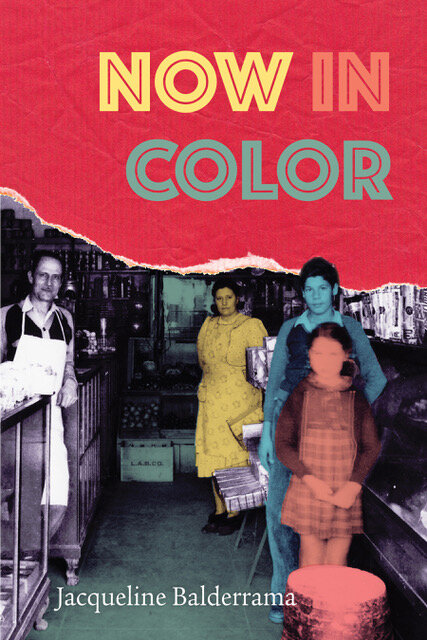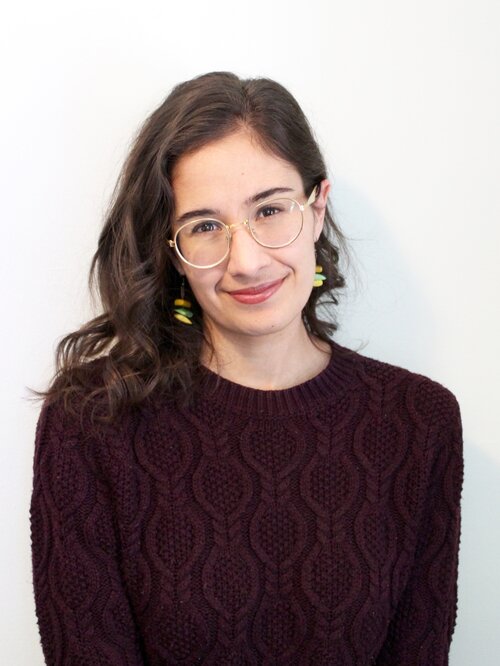When did you first encounter poetry? How did you discover that you wanted to write poems?
I recall nursery rhymes my mother would read and learning to recite Robert Frost’s “Stopping by Woods on a Snowy Evening,” in elementary school. I think the encounter that was a main turning point was the class with Juan Felipe Herrera at UC Riverside during my first undergraduate semester. I was majoring in creative writing after finding an interest in fiction while in high school. His enthusiasm and celebration of various styles expanded all notions of what I thought poetry could do. Being a visual learner and visual artist, I fell in love with the way poetry can accomplish so much in a small space and be seen on a single page. This led to a class with Christopher Buckley where I learned that graduate school was a possibility. I’ve been writing ever since.
Do you have a writing routine? A favorite time or place to write?
My writing routine is not set in stone, but I have some practices I turn to. I like to document travels and keep a small notebook for phrases that come to mind. On any usual day, I’d say, I write in the mornings when I’m most alert—sitting cross-legged on my gray, wingback sofa with my computer. There’s a lot of natural light that time of day, and I like to watch out the main window just beyond my bird’s cage. This feels particularly peaceful and can be really generative.
Where do your poems most often “come from”—an image, a sound, a phrase, an idea?
My poems often arise out of a personal experience, family stories, or an image I encounter in person or in visual arts. In this collection, I turned to works by Picasso, footage of the Mexican Revolution, interviews with my grandfather, and photographs of Hollywood actresses like Melanie Griffith when she was living with a lion as a teenager or Rita Hayworth’s glamour shots. This gives me something sensory to start with since I often rely on precise descriptions to guide my readers. Poems that start too idea heavy with a message I want to convey have a harder time getting off the ground. So I prefer to explore an image, test out syntax, and discover patterns between subjects through metaphor and parallels. This eventually leads to a more nuanced meaning.
Which writers (living or dead) have influenced you the most?
Philip Levine, whose work I was introduced to in my undergraduate, aided my transition from prose to poetry with his narrative poems. For Now in Color, Gloria Anzaldúa was particularly influential. I read Borderlands/La Frontera for the first time while drafting, and it inspired some of the formal choices and informed some of the ways I thought about language, social justice poems, and connecting personal experience to history. I also recall being moved by Gabriel García Márquez and Isabel Allende for their beautifully poetic prose and approach to generational families in One Hundred Years of Solitude and House of the Spirits respectively.
I must give credit to my poetry teachers as well—Alberto Ríos, Sally Ball, Cynthia Hogue, Juan Felipe Herrera, Christopher Buckley and others who helped me develop the skills I needed to rely on my own eye and ear.
What excites you most about your new collection?
I’m most excited about the organization and relationships between poems—not just capturing a family presence but also in making it work across generations. Developing these delicate relationships between my grandmother, and 1940s actresses, and the relationship I have with identity while also keeping a sense of the whole book required many read-throughs, rearrangements, and revisions. I am also particularly pleased with Perugia’s suggestion to place a box around the Spanish definition poems. I’d envisioned these as small section breaks and getting to experience them with a little more visual emphasis felt true to the project goal.

Sample poem from Now In Color:
The Queen of Technicolor, 1943
My grandmother is fifteen, entranced by color.
Islanders paddle to shore with loads of papaya,
the ocean sweeping the sand, spilling from the screen.
All eyes ahead. It’s Maria Montez,
this time royalty in plumeria headdress.
Yellow, coral, violet bloom around her and in her.
My grandmother’s family changes the spelling of their last name
to match: Móntes to Montez. Mountains to mountains.
Part of the giantess exists in her.
And it’s true. It’s Celia Montez like the movie star.
Montez, the Queen of Technicolor, is always in love,
or in the moment right before being in love.
With a stern face, my grandmother’s mamá tells her
The Queen is not serving her husband enchiladas and beans.
She is not telling her children to pray. My grandmother doesn’t care.
Montez’s sleepy eyes call the audience in. And this is her
secret: If you were like her—a princess in the tropics, a Persian queen
Cobra Woman—you’d be in love, too, or about to be.
For my grandmother, the hum of her Spanish accent
under the English words is the fisherman’s line in the meet cute.
She, like Montez, is home in a paradise, from which all colors illumine,
sent forth on waves to the shore, to the promenade, to the dance hall
where girls like her wait for their stories to end in a kiss.
She will know what happens soon enough, when
at nineteen, my grandmother marries Enrique,
her last name disappearing in those starry children
chasing one another through their Anaheim motel.
She will outlive Montez, who dies in her reducing bath at thirty-nine,
and she will say her father’s name to herself, Pedro Móntes,
will recall his singing “De Colores” on the local radio.
This poem previously appeared in the literary journal: Miramar.
Purchase Now In Color

Jacqueline Balderrama is the author of Now in Color (Perugia Press, 2020) and the chapbook Nectar and Small (Finishing Line Press, 2019). She serves as a poetry editor for Iron City Magazine and has been involved in the Letras Latinas Literary initiative, the ASU Prison Education Program, and the Wasatch Writers in the Schools. Currently, she’s pursuing a PhD in literature and creative writing at the University of Utah.